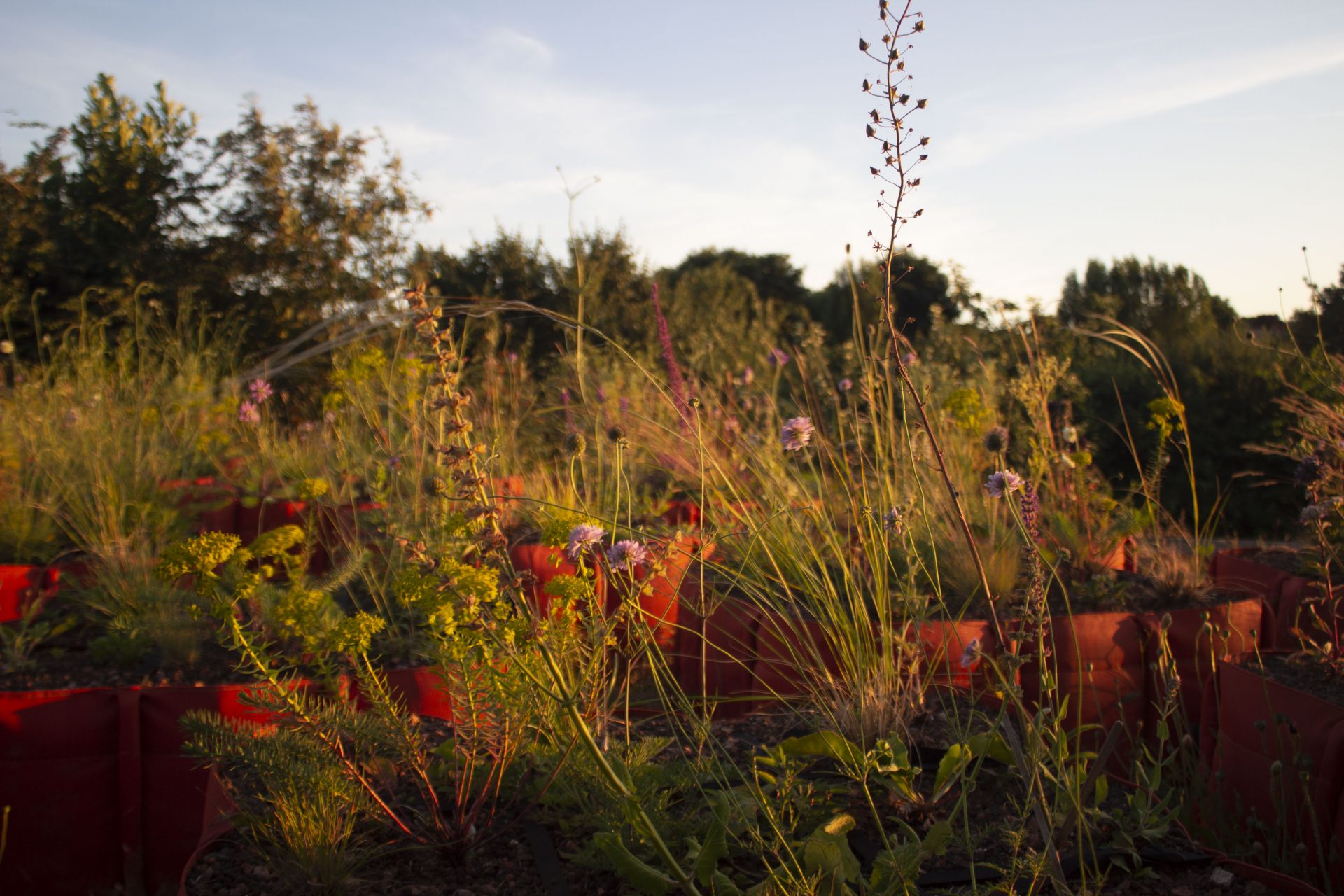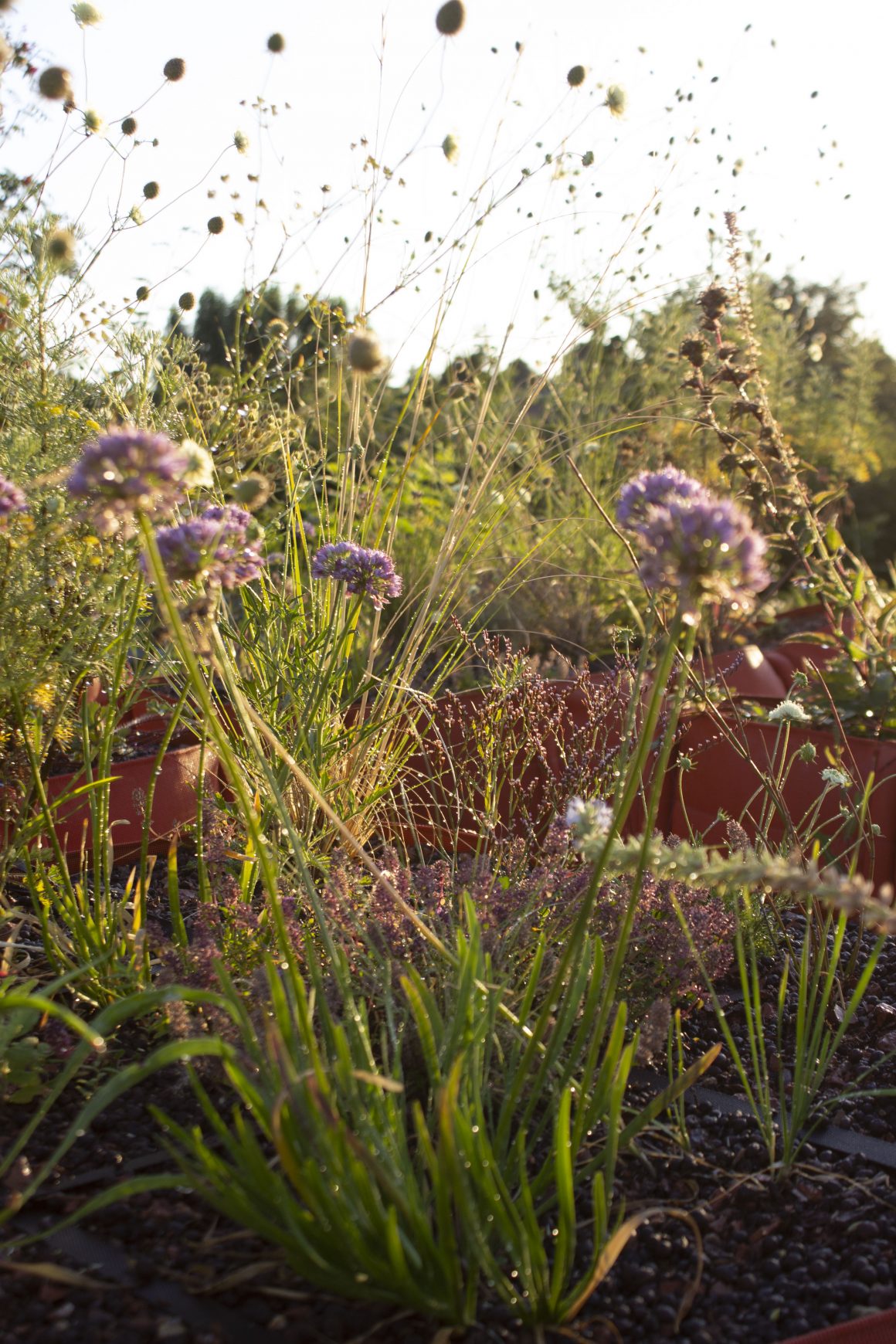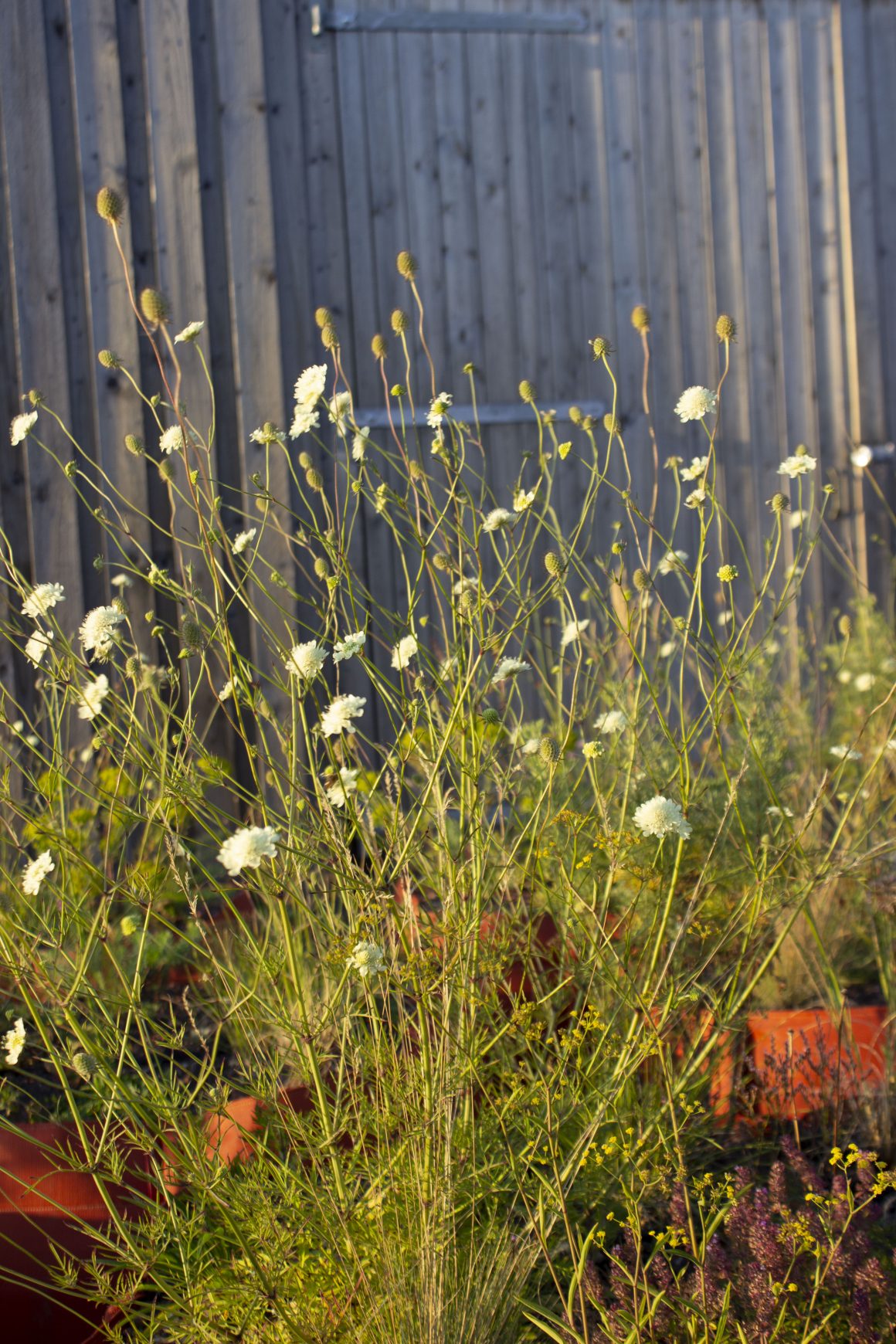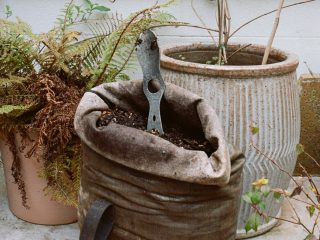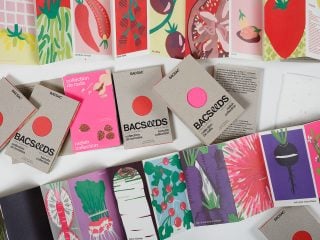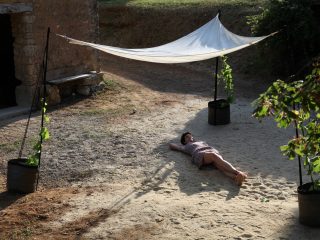The Designed Steppe Project by Anna Andreyeva
Sheffield, England
In a research PhD supervised by Nigel Dunnett, landscape designer Anna Andreyeva looks at resilient urban planting solutions, testing native plants from the Eurasian steppes. Since her field experiments are planted in BACSAC® raised beds, we were keen to interview her and to learn more in details about her project.
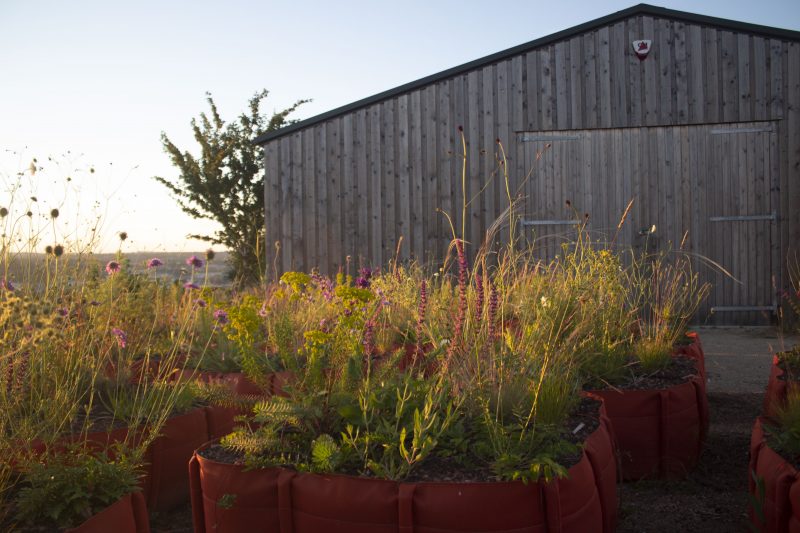
– Hello Anna. Can you introduce yourself and what led you to enroll in this PhD focused on plant ecology?
I’m a landscape designer and planting consultant. I was born in Moscow and settled in the UK with my son, about four years ago. I come from a family of enthusiastic gardeners: my great-grandfather was a forester, we regularly hugged trees on our walks in the forest and me and my mom grew every perennial we could get a hold of in our countryside garden. In my late twenties, I went from passionate plant geek to landscape design professional, introducing the New Perennial naturalistic style to Russia. However, when my big public realm projects started to fail due to poor maintenance, I became more interested in plant ecology and decided to enroll in a PhD at the landscape department of the University of Sheffield (England) in order to gain a stronger scientific background.
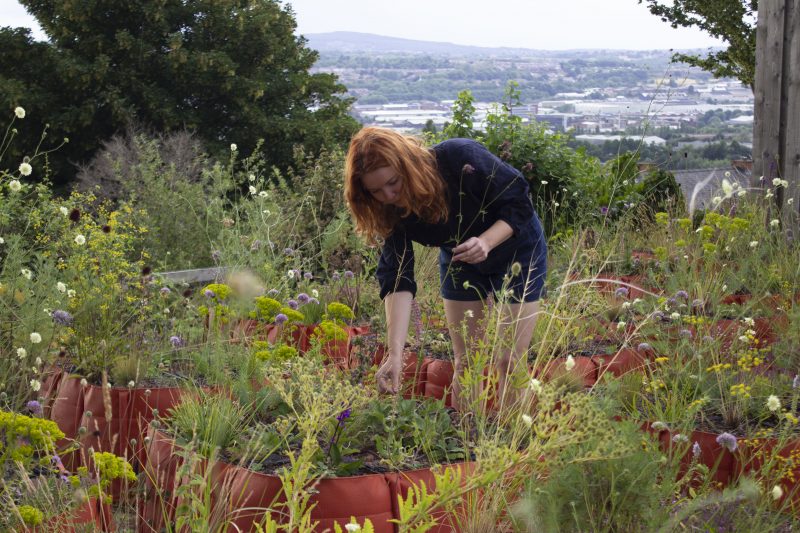
– In a nutshell, what are your PhD expected outcomes?
My research aims to develop drought-and-cold tolerant plant mixes – inspired by steppe vegetation – with year-round visual interest; and to ultimately apply these planting schemes for use on roof gardens, roof terraces and green roofs. Our cities can greatly benefit from the delicate beauty and resilience of steppe plant communities.
– Can you explain what steppes are?
Steppes are vegetation types from temperate climates that can be found in different parts of the world (Eurasia, North America, Patagonia, or North Africa). Commonly dominated by perennial grasses and colorful forbs, they endure extreme temperature shifts: from hot dry continental summers, to cold winters, often with low precipitation and strong winds. But you can’t imagine the wealth of perennial plants thriving there! Salvias, Euphorbias, Scabiosas, Alliums, Vebascums, even peonies, and lilies for instance are typical steppe plants. And Asparagus too! We’re quite familiar with them in our gardens, but we don’t know they come from the steppes.
– Why is a planting design inspired by the steppes relevant to urban contexts?
From an urban landscape practitioner perspective, here’s what’s at stake in our cities.
- We need more nature to mitigate the consequences of climate change. And since space is limited in our increasingly built-up cities, roofs are untapped potentials for which steppe planting is a relevant model.
- Long-lived and drought-tolerance planting with lowest maintenance. Steppe grasses live up to 50 years and most steppe forbs up to 10 years. And with hosepipe bans in place this summer, it is important to rely on species that can cope with heat waves.
- Longer season of flowering to provide value for pollinators. In the UK non-native steppe plants continue to flower when the native species are no longer in bloom.
- Beauty. I believe that planting is an art form and this aspect is no less important as biodiversity or sustainability.
– How did you design the site you were given for this field experiment ?
My experiments are located on a hilled site overlooking the former industrial city center of Sheffield. It is very windswept, just as the steppe habitats are! To recreate green roof conditions, I installed 24 BACSAC® raised beds, filled with two different substrate depths: 20 cm which is the standard depth for green roof and 40 cm which is another common standard depth for “landscape over-structure” projects. Although steppe soils are the most fertile in the world, I used a common green roof substrate that will most likely be used by the landscape industry, so as to select the plants that’ll best thrive in this type of soil. Then, I created two distinct plant mixes of grasses and forbs, with different flowering periods that stretch from early spring to late autumn. One is based on Central European and Ukrainian steppe communities, and the other one is based on Asian steppe plants. Lastly, the irrigation has been limited to emergency situations: only the day before several days in a row of temperatures over 26 degrees.
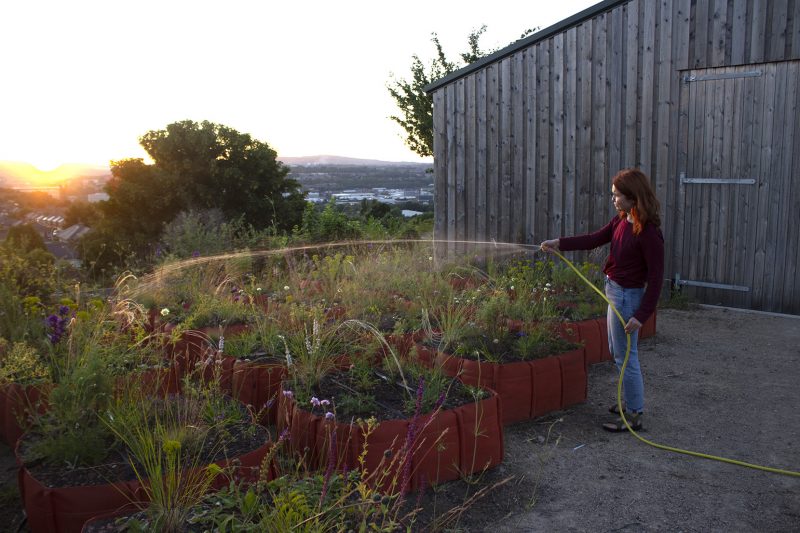
– For which reasons did you use BACSAC® square raised beds?
I have been using BACSAC® for almost a decade now. They work really well for use on roof gardens and balconies due to the ease of installation. For this scientific field experiment, BACSAC® raised beds allowed me to create a flexible and contemporary work space, with minimal long-term impacts on the site. Over this summer heatwave, I also noticed most of my plants did not show signs of drought stress, thanks to a good insulation of the BACSAC® materials.
– Can you name a high profile landscape project which effectively demonstrates the use of Steppe plant communities?
The steppe planting achieved by Nigel Dunnett at Barbican center in London. It is an outstanding example of landscape above concrete structure where drought stress is of high relevance.
To find out more about this project check out nigeldunnett.com/barbican/

Podcast: listen to Anna’s interview with Jennifer Jewell Cultivating Places.
Follow Anna on Instagram


